Shop artwork by Denise Bettelyoun
If you’re interested in buying one of my artworks, feel free to contact me at:
︎
info@denisebettelyoun.de
Radical Knits
Knitting fascinates me, because it works with the same structural principles as our cell-structure. You take a cell (loop), join many cells to form a structure (knitted fabric) - and this serves a life-giving purpose (heart, lungs, kidneys, skin e.g.). The structure of knitted fabric resembles the structure of nature and can therefore depict natural organic and biological shapes and forms. If you blow up the dimensions of the knitted fabric, environments of wheat and flower-fields are formed and gigantic twines grow through the gallerys and frightening overdimensioned body-fragments hang from walls. The knitting in this dimension, the association with craft forwards another meaning, that transcends just being a motif or ornament on a pullover or pillow. Haptic aspects of this work become overly present and the structural composition becomes obvious. The viewer is enveloped by woolen environments. Art-fair visitors confronted with my work for the first time reflected, that the structures principles are based on natures structure. It´s interesting, that we knit up a structure based on natures principles of structure, in order to warm, protect and decorate our body with a second skin, without realizing the immense creative potential, that exists aside of cultural receptions and cultural usages.
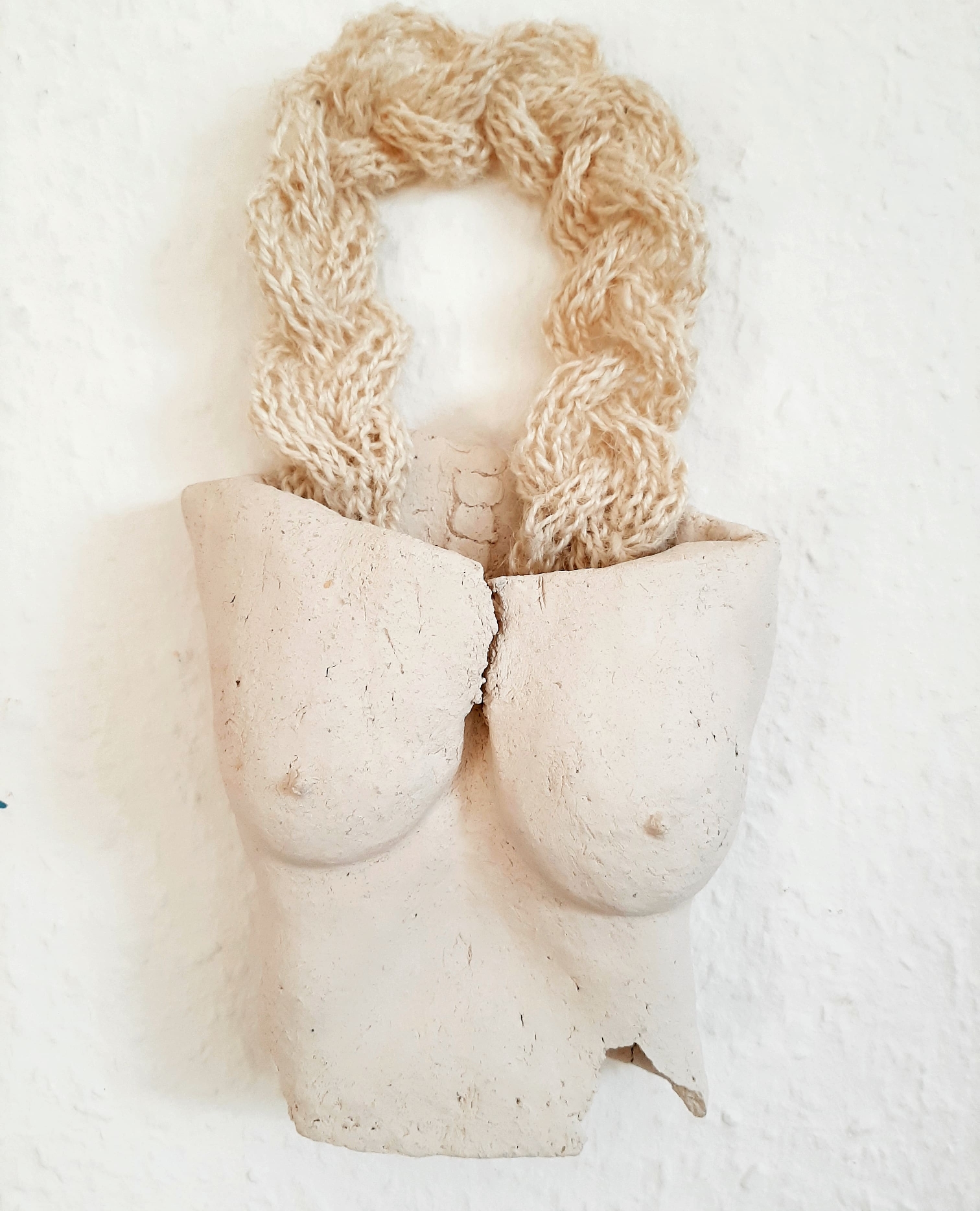





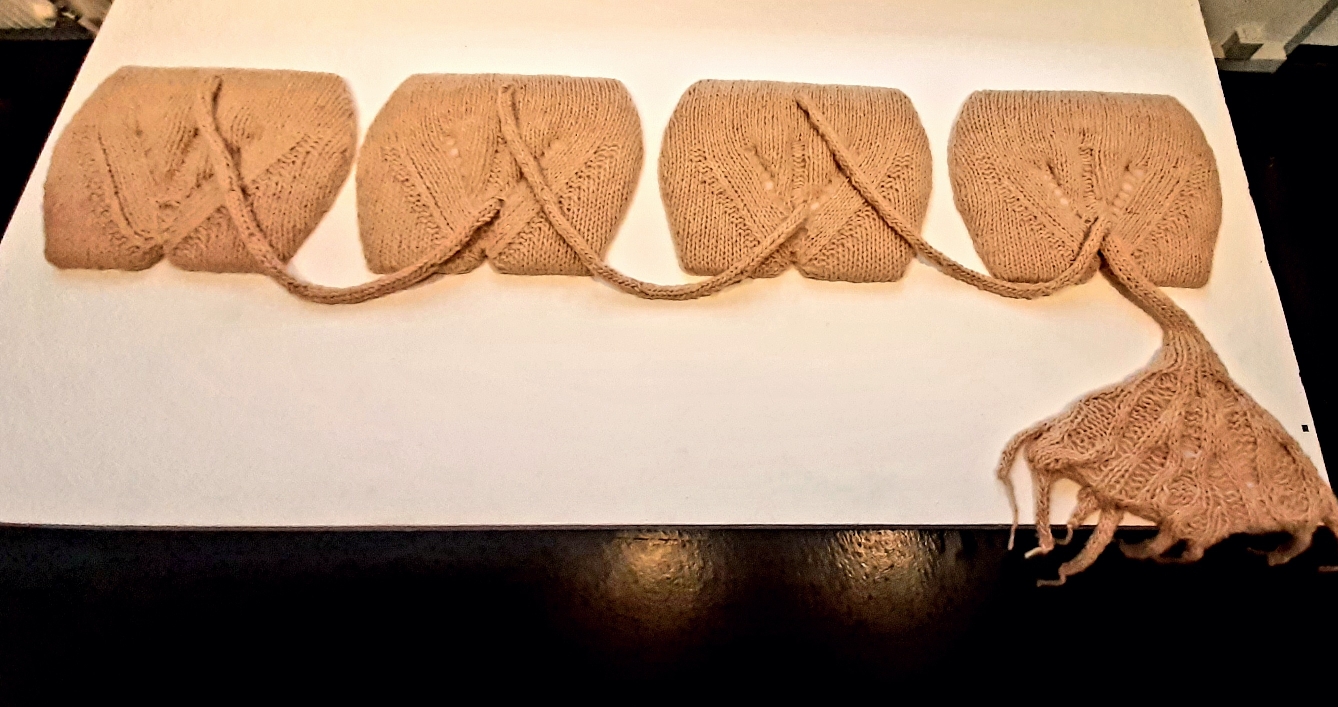
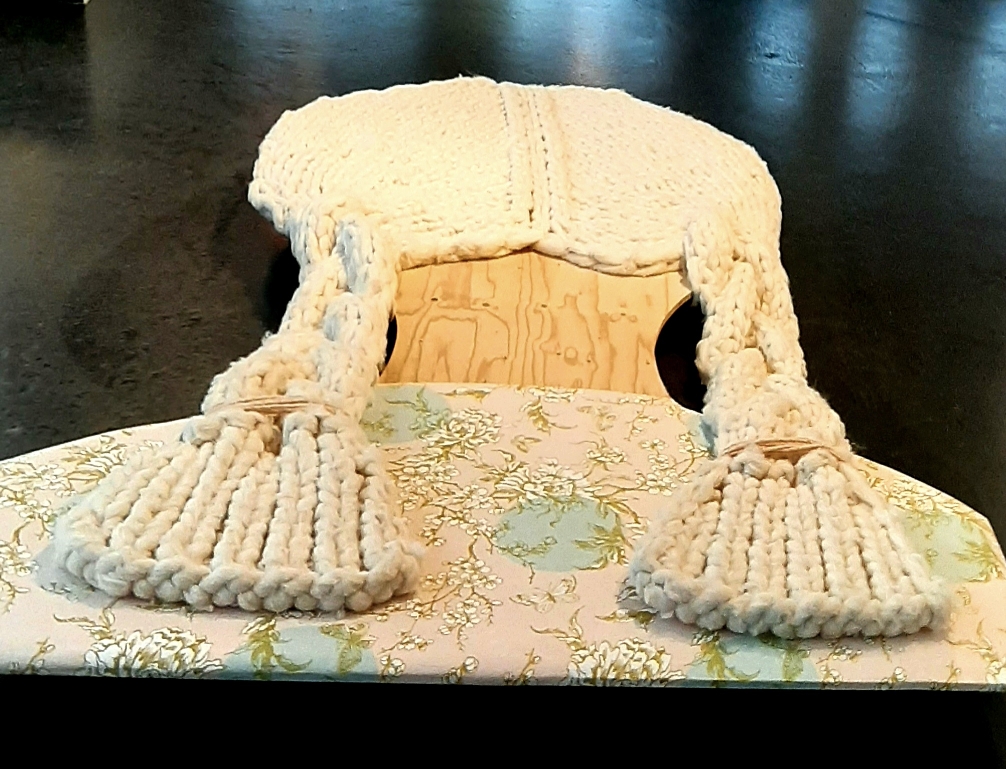

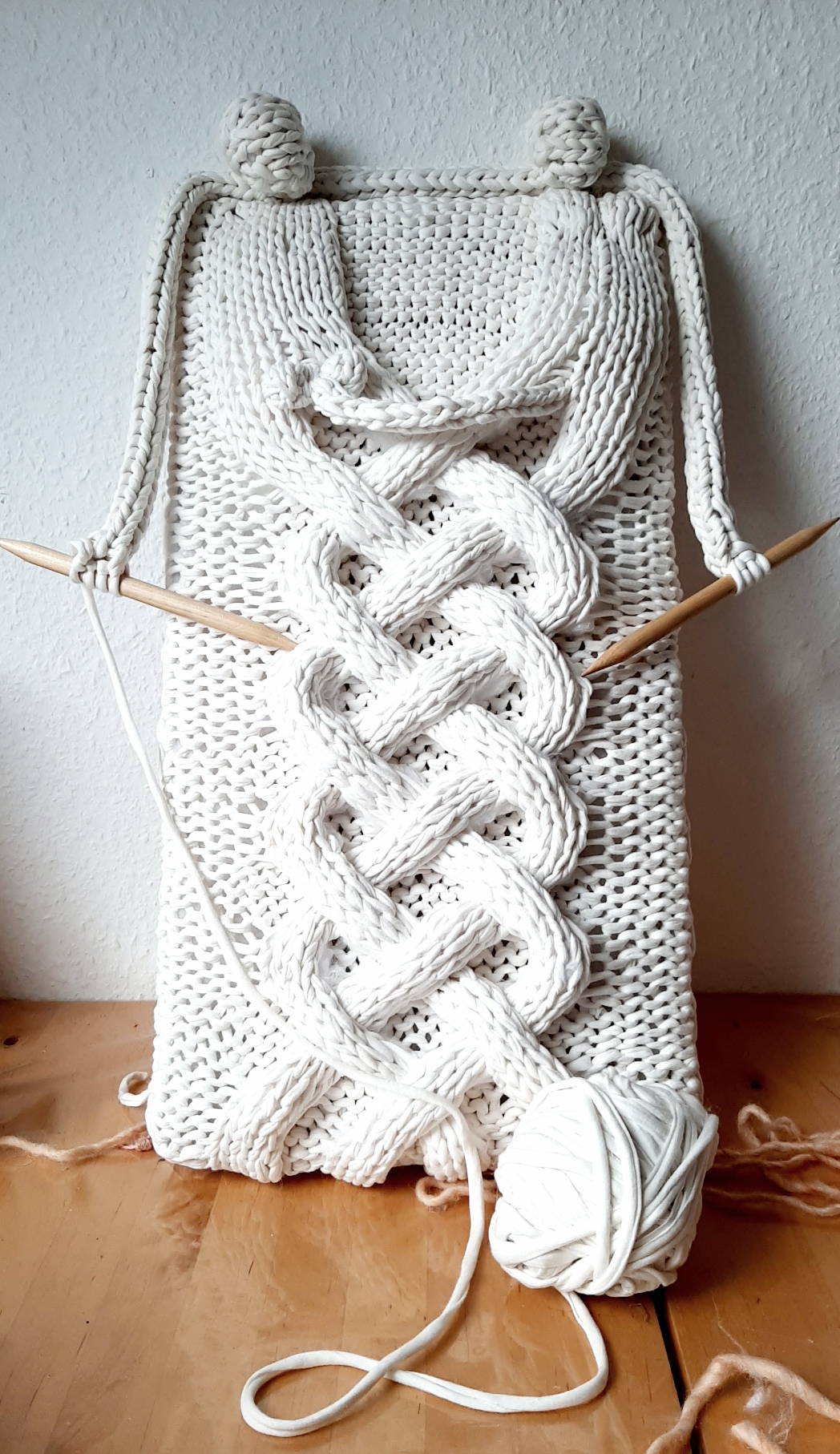



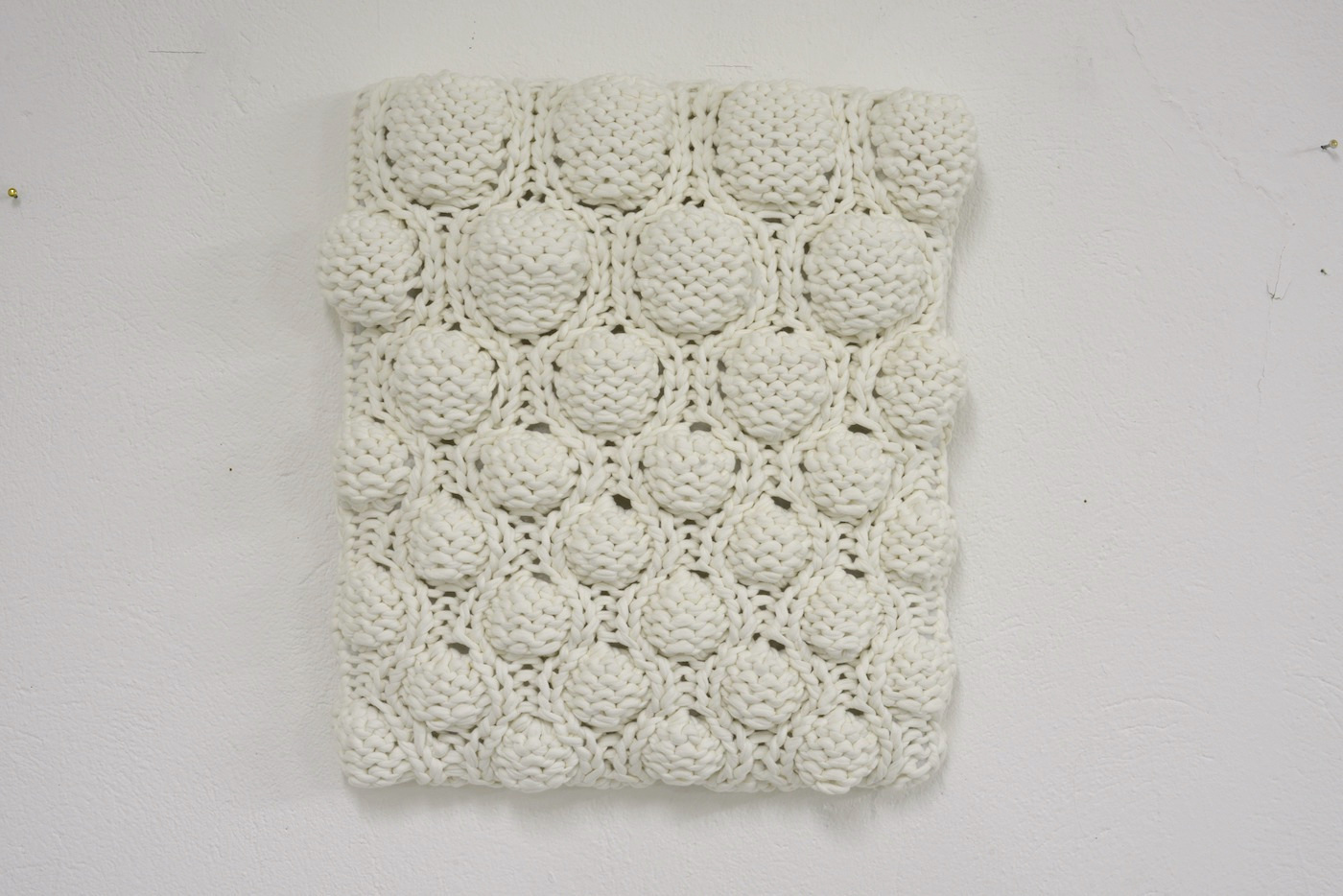

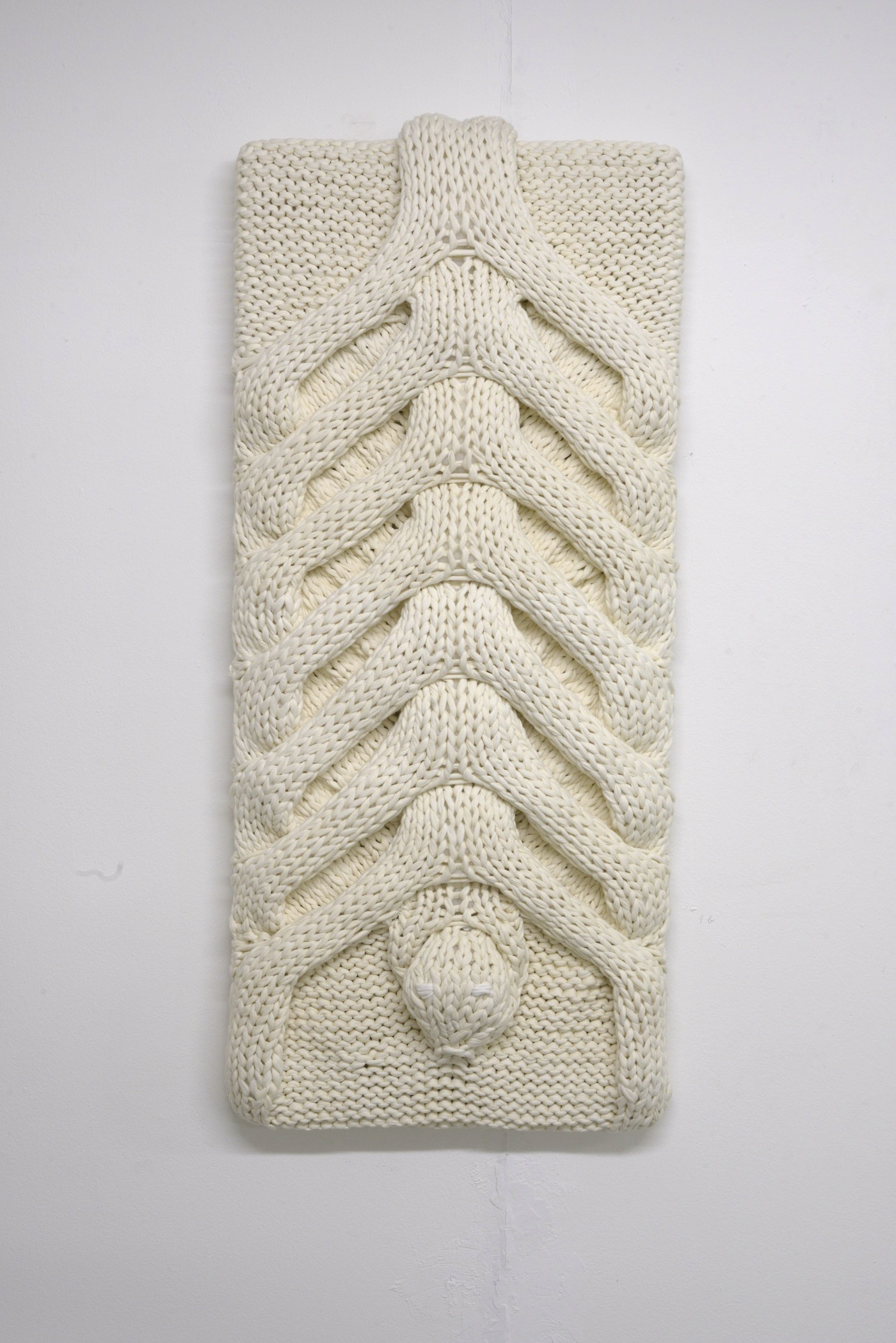





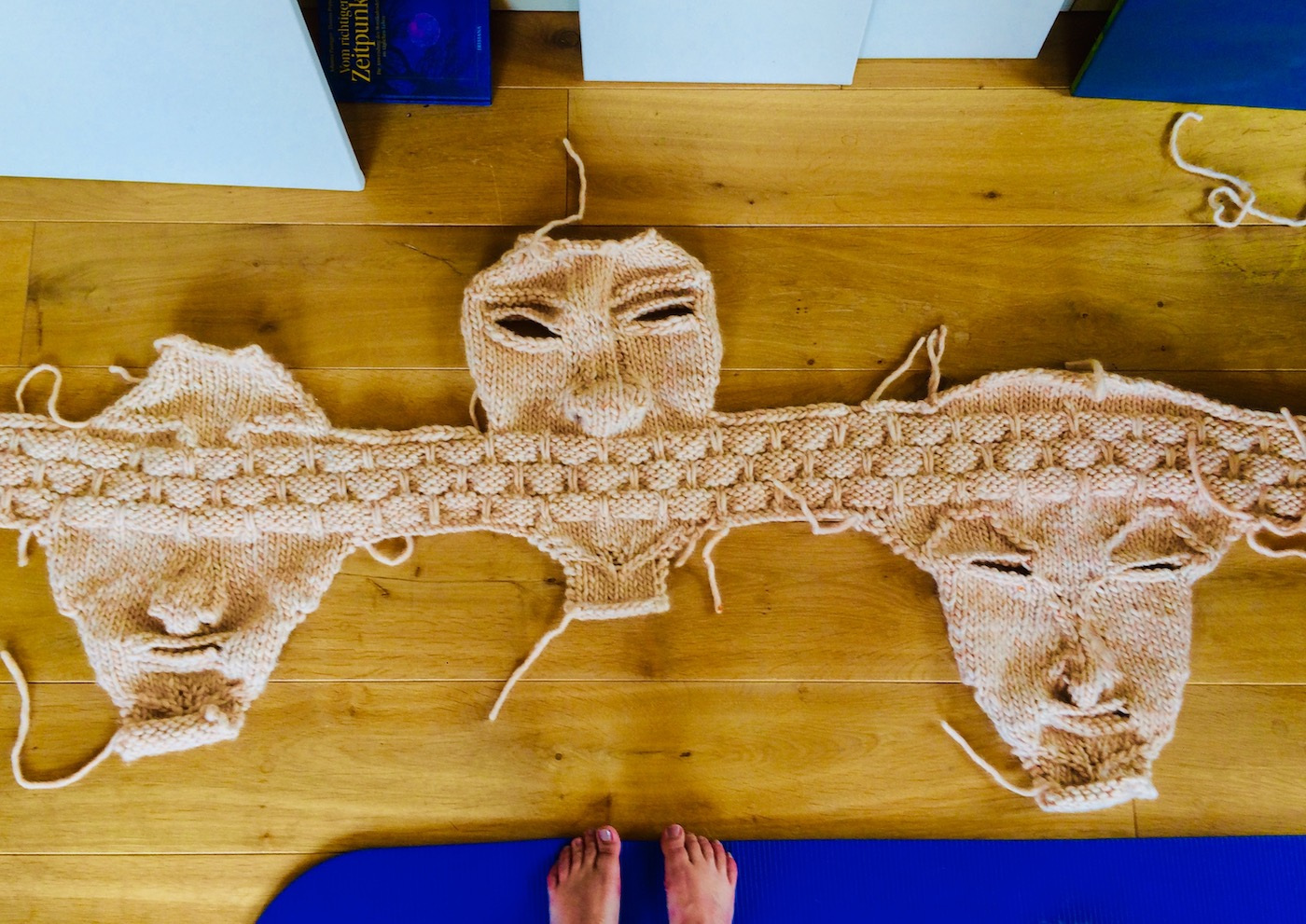




Handmade Felts
Handmade Felts
For quite a long time, I was missing the warmth and softness within my drawings. I always felt, that my drawings where cold and sterile on white paper. I yearned for a haptical base and never had a clue to how this could possibly become reality...when one day I read about a mongolian technique of felting. I visited a few exhibitions in Hamburg, in which I became fascinated by the fact, that this technique left the contures of an ornament untouched, while embedding motifs into a felted base. Another fascinating aspect of this being, that felt is the primary prehistoric form of manmade textile. In two years of experimenting and hands-on work, I learned this mongolian felting technique in order to get the results, that I was in search of: Being able to embed my drawings into a haptical base. The „Felt-Pieces“ were born. I was fascinated by the fact, that I was using the traditional material felt, which was culturally established as a medium to warm, isolate and decorate- and put it to use as a haptical canvas of an art-form. The motifs of my felted pieces confronting the viewer with perverted and subversive contents, that break with the tradition of the usages of felt.





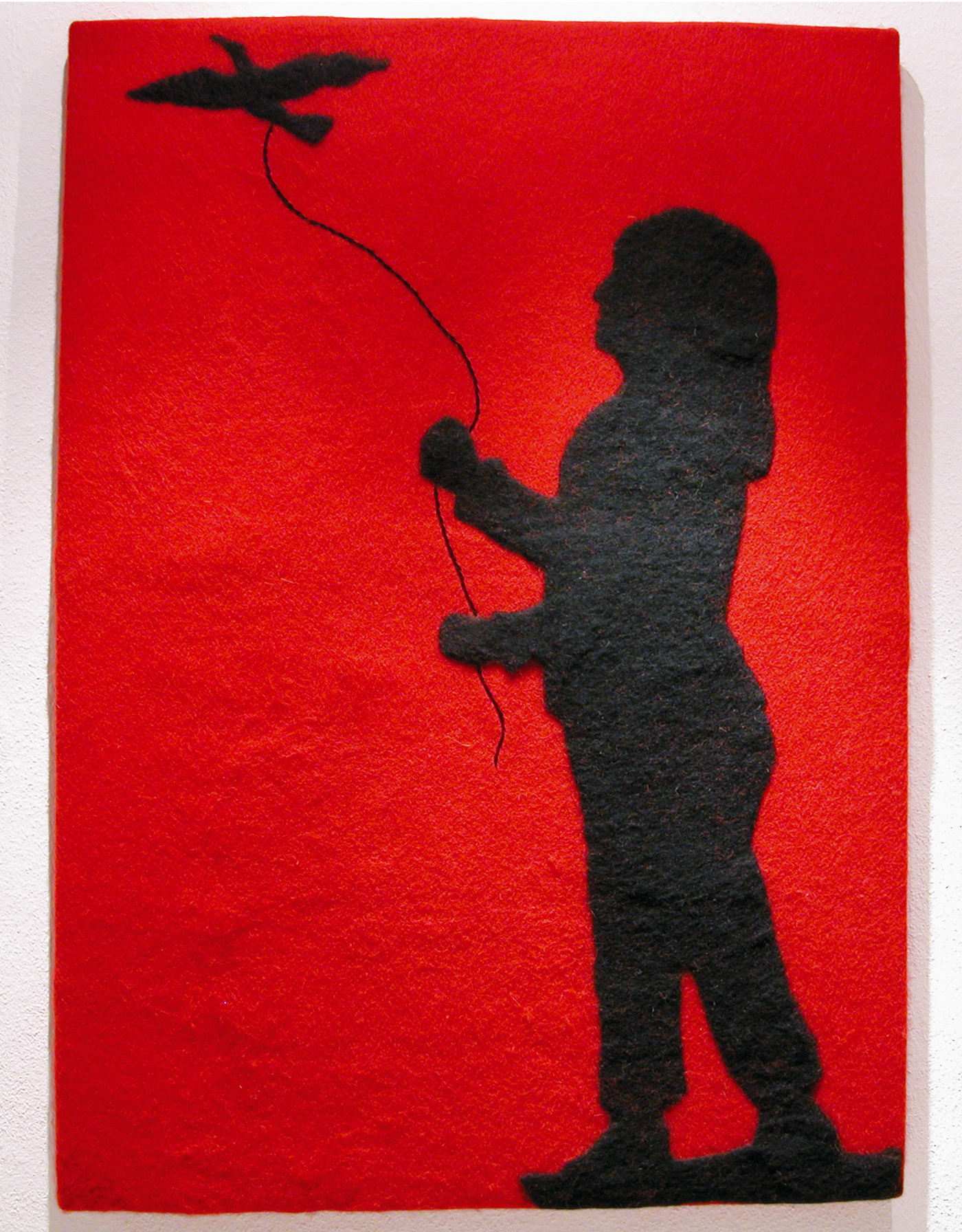










Paintings
I only use earth-pigments (mexican ocre, italien siena, umbra, ironoxide,ruddle or red chalk, chalk and charcoal, that I grind and mix with binder to produce my paints. For me natures pigments are the deep connectors to earth and nature, its colours, atmosspheres and materiality. They are natures basic modules and carry its energy, atmosphere and feel within them. I am fascinated by the manner in which painters in medieval and renaissance times extracted and produced pigments. At this point in the history of painting, the raw materials for pigments were still completely extracted from nature. These raw-materials were minerals, animals, plants, metalls e.g. Jan Van Eycks paintings incorporated dark-blue skies, that were made of grinded lapis lazuli. The natural crystal-structure within the gemstone gave the illusion within the painting of a depth glow and shine, that noch synthetical pigment could ever generate through painting. I always paint on raw canvas, mostly pure linen. I love the textile structure and the textile work, that canvas incorporates..- it makes my paintings textile works of art. Often I also embroider into my paintings and combine both. The themes of my work reflect on our connection to nature within ourselves, around us and our relationship to it. Often I work with metaphores and representations. As the daughter of an american indian „Oglala-Sioux“, I was raised from early on, to develop a deep connection to nature and this has always been a deep wealth of inspiration for my artwork.


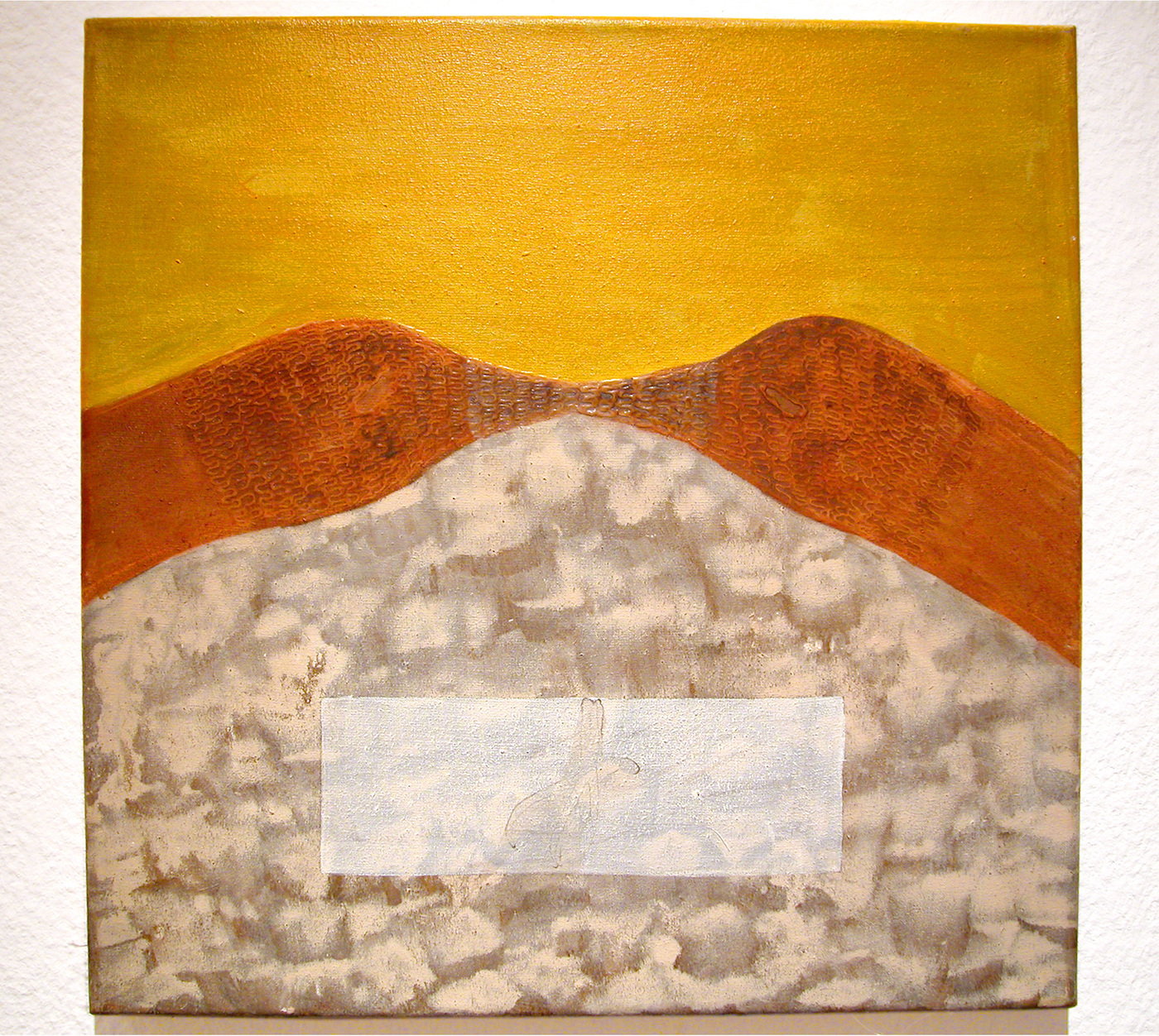

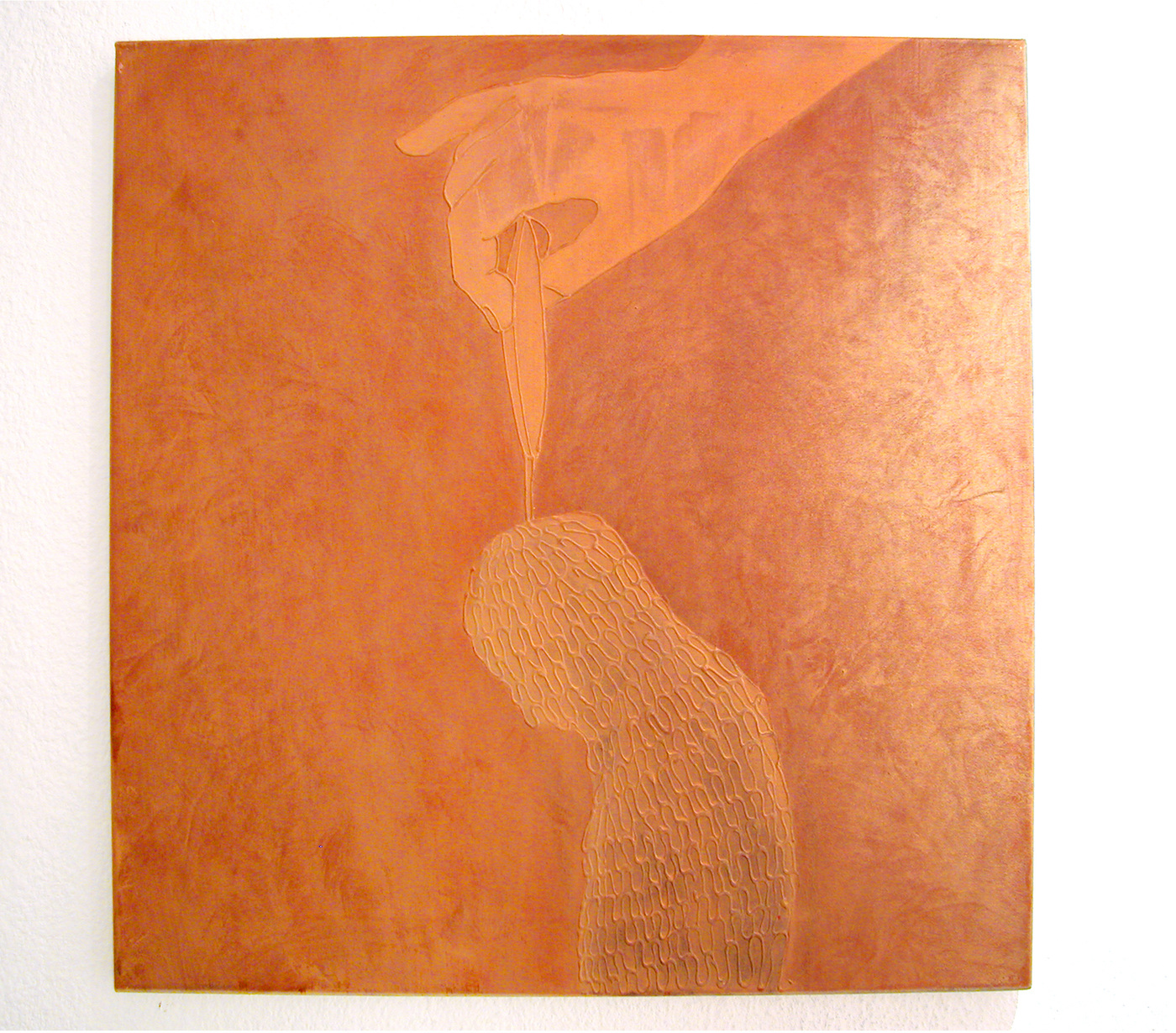



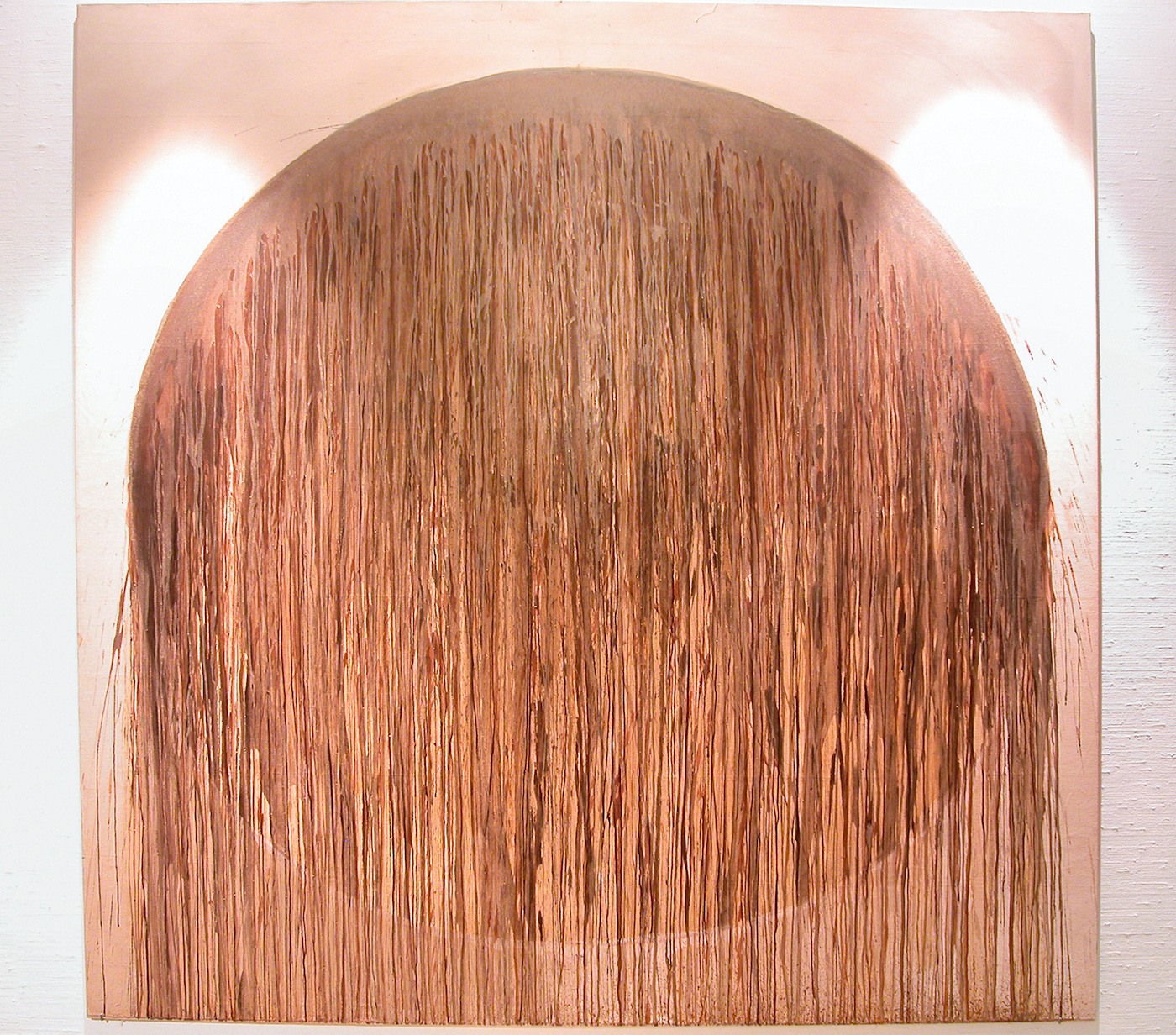

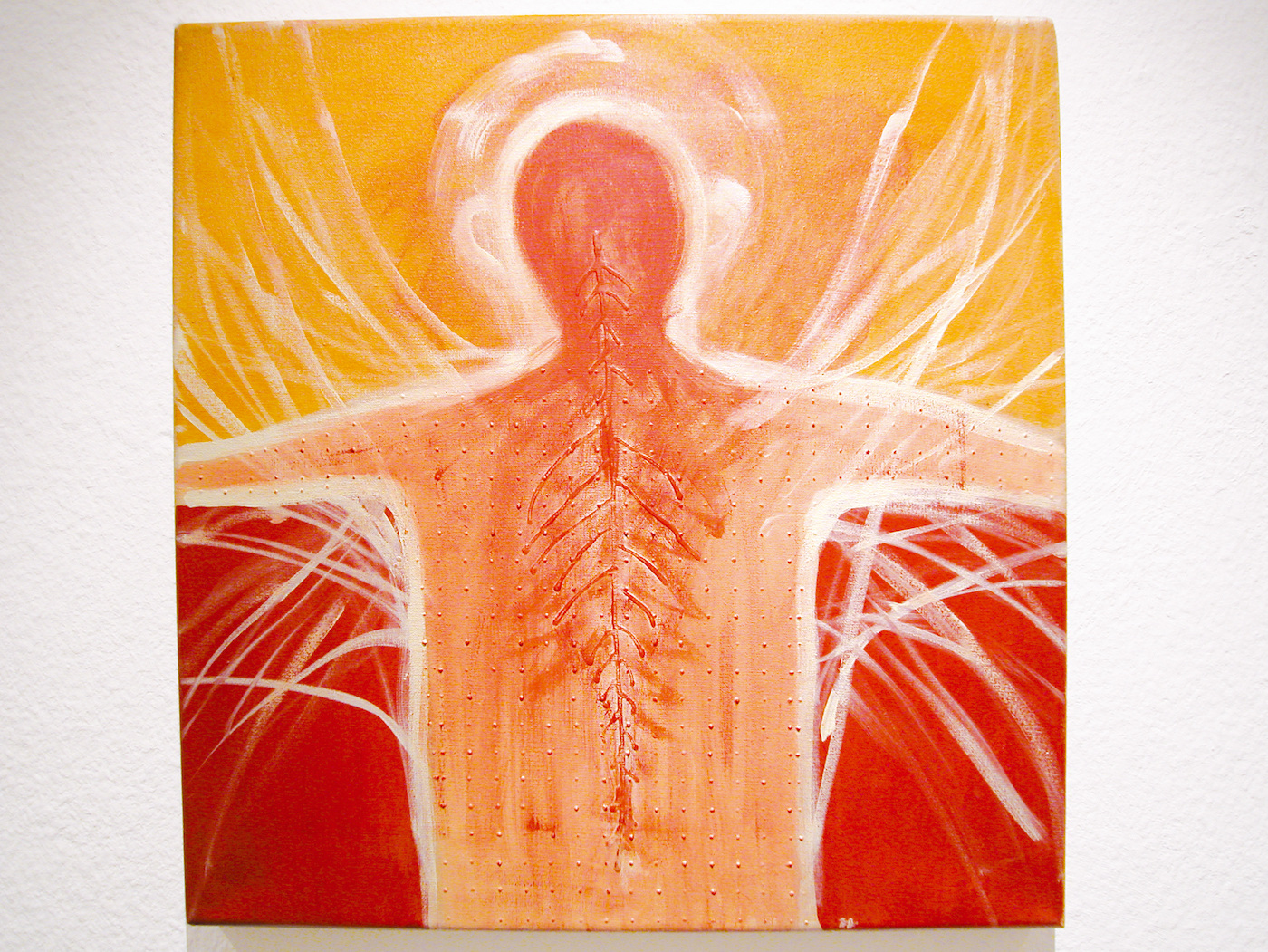


Bobbin Lace
Bobbin Lace
The drawings in this portfolio mirror and analyze bobbin-lace-doilies and the path of their threads. These are magnified and manipulated with the computer. The result of this work is then transferred to canvas by hand-drawing the projection onto canvas again. The basis of bobbin lace is a paper-model, which helps lead the path of the thread within the lace-work. It also shows the shape and path of the thread within the doilie and gives information to the type of lace-structure, that is used for filling the spaces. In bobbin-lace-work, not the paper-modell is important, but the lace in itself. Usually it is discarded. My drawings discard the lace-doilies and give the paper-model a new usage as a form of art. If you look at the structures formed by the threads, you realize, that they resemble the structures found in nature. The associations with the pupil, penis or other living structures become evident, although all I did was change the dimension and fracture the threads path- not more than that.



Drawings
My drawings are primitive little sketches, mostly metaphoric depictions, that build the basic material for my haptic translations into textile materials and techniques.


